1) Training matters: I started running again in the spring of 2020. I registered for a marathon to be run in early March, but it was rescheduled three times due to Covid. This allowed me 18 months to go from 0 miles to 13.1 miles. There were runs that I was certain I was not going to finish, and one in particular that I never finished. I trained on hills all around my house, running long runs and tempo runs up and down them because I knew the course in downtown SF had plenty of them. On race day, I was prepared for the challenging parts and for the long slogs up the hills.
2) Support makes it possible – I could not have done any of this without the support of my incredible husband. Although his preference was that we hang out on the couch eating pie, he has always been my biggest cheerleader. He kept the kids for all of my training runs, moved our anniversary weekend away to Santa Rosa so that I could run a practice race, and took care of all the details on the morning of the race. The night before the race I was still undecided about whether to run because he would have to do his dad’s whole morning routine, get the kids out the door for church, and run all the Children’s Ministry prep. Of course, he did it all fantastically, (as always) my anxiety tried to create a problem where none existed in reality.
3) The first mile is the most important – the first mile of training and the first mile of the morning. There were so many days I was sitting on the couch completely dressed for a run, debating whether or not to walk out of the house – and I was always grateful that I did. Compared to most runners, I am painfully slow, but I have learned that it doesn’t matter how fast (or not fast) I run. What matters is that I get out and give it my best effort. When I first started running again, one mile was challenging to finish, but I would have never gotten to the finish line of the race if I didn’t start with that first mile.
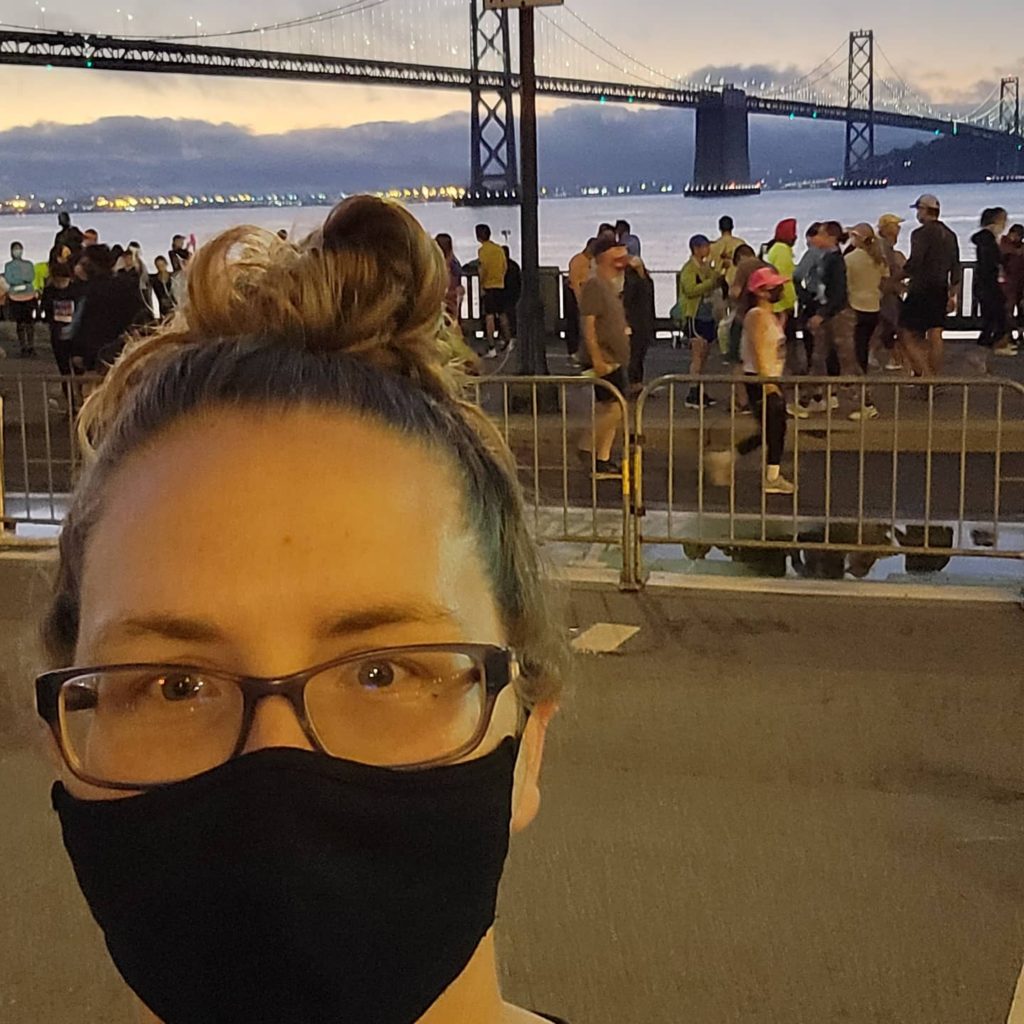
4) A systems check can be a life saver. I used Nike Run Club guided runs to train for this half marathon, and the “systems check” is an instruction repeated often by Coach Bennett. Start with your head – how is your self talk? Shoulders – low and relaxed. Breathing – under your control. Arms – pumping forward and back, not across your belly. This check could increase my pace without increasing my effort; in fact, it usually increased my speed with a marked decrease in effort.
5) There are some mornings and miles that are simply hard. Pushing through is usually worth it, but sometimes rest is necessary. Over the months of training, there were mornings when I had gone to bed late and getting up was particularly challenging. On these day, I would push myself through. However, there were other mornings when Fin had been sick, and I had been up most of the night. There were a few nights that I had been sick. On those mornings, I turned my alarm off because rest is even more important than running some days.
6) Imposter syndrome is real. I got on the bus the day of the race, and immediately started to feel insecure. The people around me had water backpacks, straps to hold water bottles to their hands, space blankets to keep warm before the race, and a variety of other gear showing that they were “real runners.” I had my little water bottle from Food Maxx because I found it easier to run with that on training days than to run with the big one I use daily. In addition to being worried about all the things that had to happen at home, I was now worried that I didn’t actually belong at the race.
7) Miles 9 and 10 are hard, whether training or the race. During long runs in training, I remember getting to these miles and thinking “I’ve run really far. I could just go home now.” On race day, there was no shade on miles 9 and 10. We had covered most of the hills, so it was all flat ground with the sun glaring. Those were very hard miles. I scheduled one of my GU energy gels right in the middle of the miles so that I had something to look forward to and received an energy boost when I needed it most. Pushing through those tough miles is the only way to the end of the race.
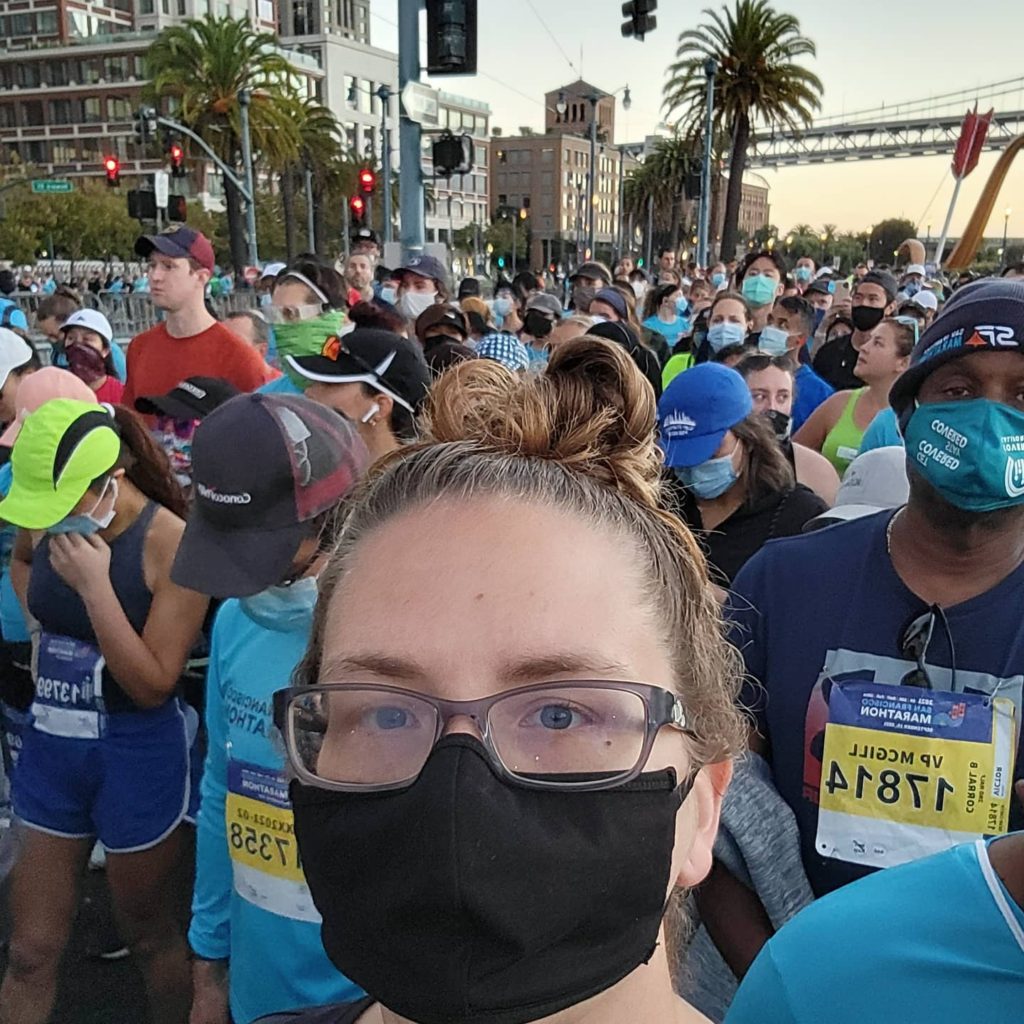
8) The race goes on even in less than ideal conditions. On the morning of the race, the sun was beaming down on the Presidio. For anyone not from San Francisco, this is highly unusual. At 8:00 in the morning, beaches in downtown SF are overcast, windy, and cold. Not the morning of my race – it was full of sunshine and heat, and I am sure there were thousands of runners who love to run in that kind of weather. I hate it. Give me rain and wind any day of the week over running in heat. The fact that I didn’t enjoy the conditions didn’t stop the race. I had to keep going even when I wanted the environment to look different.
9) Sometimes I need to stop for pain, but sometimes I need to push through. Labor Day was two weeks before my race, and I twisted my ankle and fell hard as we were loading the van to go to the Labor Day Picnic. I have turned my ankle multiple times before, so I knew that running on it was risky. I took the entire week off and then went on a very easy run one week later, exactly one week before the race. My ankle, supported by an ankle brace seemed to hold, and we decided that I could run the race anyway. I don’t think I would have been able to if I had chosen to train that week on a bad ankle. On race day, I started having intense abdominal pains associated with my gallbladder, a long standing health issue. I knew it wasn’t dangerous – just painful. This was a pain that was worth pushing through to finish the race.
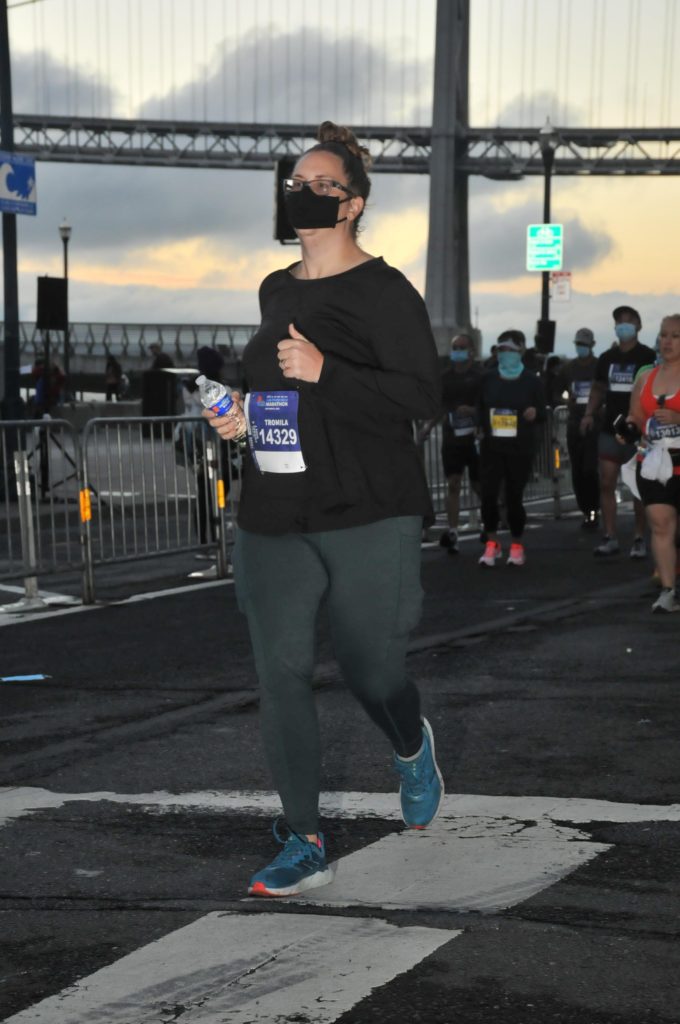
10) Practice leads to improvement. I know the idiom is “practice makes perfect,” but I am never going to be a perfect runner. In fact, I’ll probably never be a great runner, but I can certainly be an improved runner. This race was much better than my 10K a few weeks before. In that race, I started off much too fast and ended up dragging myself across the finish line. When I felt that happening early in this race, I had enough presence of mind to back off early, and I finished this one so much stronger than I had the 10K.
11) Consistency allows for flexibility: During that time, I decided to change my registration from the full marathon to the half marathon, and I am so glad I did. During the six months before the race in September 2021, we took on more caretaking duties for my father-in-law. I did not have the hours each week that training for a full marathon would have required, but it gave me plenty of time to do long runs, hard runs, easy runs, speed runs, and sometimes no runs at all.
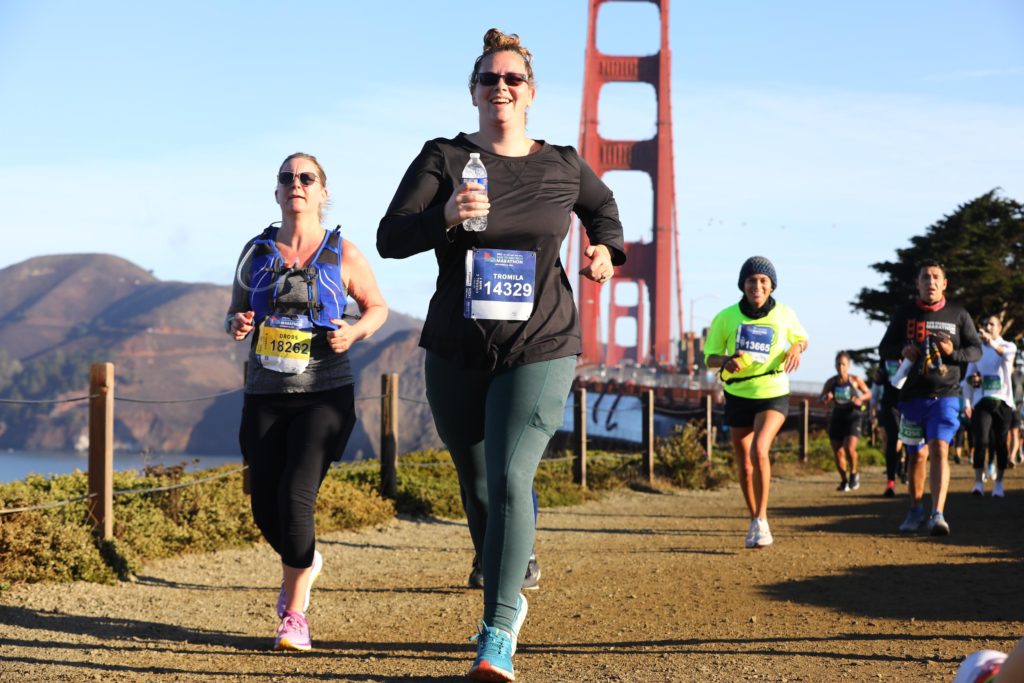
12) Nothing new on race day. Training was helpful in many ways. I learned that certain socks did not cover my ankles sufficiently, allowing blisters. I learned where I needed vaseline to prevent rashes. I learned how best to carry my water bottle and energy gels, how often to use them, and when they might upset my stomach instead of giving me energy. I learned what clothes worked better, and I learned how much I loved my running shoes. I took all these lessons and used them to put together the most prepared racing morning I could. The right clothes, all the way down to my socks, and the right supplies to make it the entire race.
13) Running the entire distance is not necessary; walking can be an invaluable resource. In fact, my pace increased when I used interval running. A good friend, who was also a source of lots of encouragement during training told me about it. With some trial and error, I found that running eight minutes and walking one minute was the right balance for me during training. I used intervals for any runs over 10K. The next time I race, I think I will try seven minutes running and one walking because I was racing at a much faster pace than I do my normal long runs.
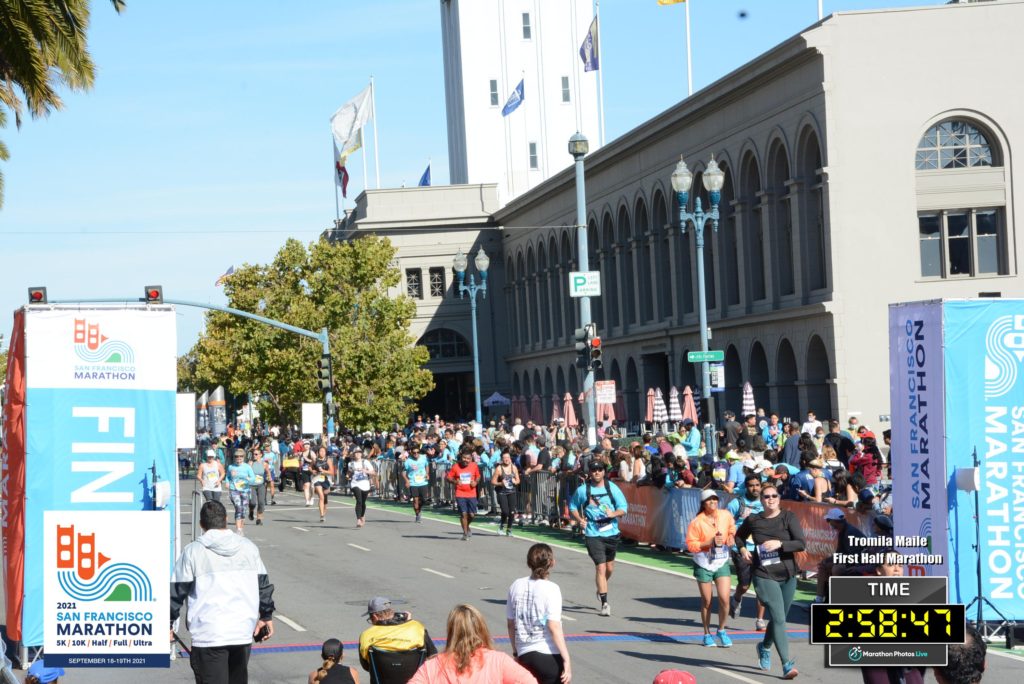
13.1) The race was fun, and I will run another one next year. But it was the training that was life changing. It reduced my anxiety, allowed my quiet times to be more effective, and made me stronger physically and mentally.